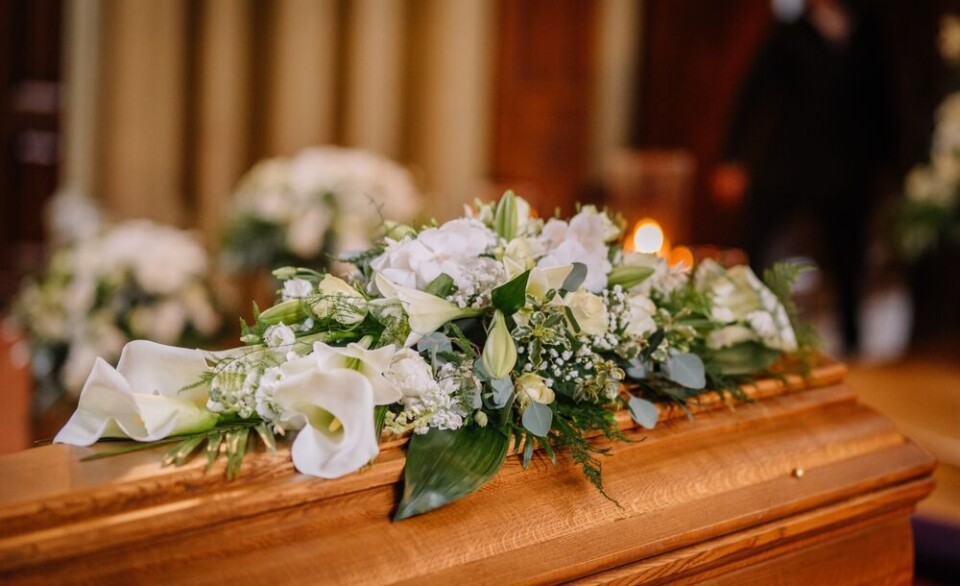-
Drinking tap water restricted for children in south-west France communes
Haute Garonne prefecture says the measure is precautionary and due to high chlorate levels
-
‘Trustworthy’ media label idea from Macron causes political storm in France
Comments prompted fierce political backlash from right but government insists it was taken out of context
-
French prime minister faces fresh problems to pass a 2026 budget
MPs continue to argue over budget but alternative measures could possibly see government toppled
French region offers €20,000 for rain collectors as popularity surges
The aid comes as more than a dozen French departments are on drought alert for all or part of their territory

Homeowners in Ile-de-France, the region around Paris, can now benefit from government aid of up to €20,000 to help build a rainwater collection system in a scheme intended to save money and help the environment.
Eligible homeowners are encouraged to use the rainwater on their gardens and plants instead of clean drinking water.
Several other similar schemes exist elsewhere in France and it comes amid a surge in demand for rainwater collectors.
More than a dozen departments are on drought alert on all or part of their territory after a record winter dry period.
As a result, France president Emmanuel Macron last month laid out more details of a water plan aimed at cutting consumption and better managing the resource.
Read more: How bad is the drought in France? See restrictions in your department
Who is eligible?
The Ile-de-France region has introduced the scheme as part of its climate change plan, le Plan de protection, de résistance et d’adaptation de la Région Île-de-France au changement climatique (PRACC). This plan aims to protect the region’s ecosystems, vulnerable residents, and economy.
Up to €20,000 in total could be available per property, to help homeowners install an above-ground or underground rainwater collection system. One such aid package is available per property.
To be eligible, the property concerned must be:
- The owner’s main home (not a second home)
- The owner’s financial domicile address (for tax purposes)
The amount is capped at 50% of the cost of installation. The maximum amounts available are:
- €20,000 for underground water collector systems, of five m3 minimum
- €10,000 for above-ground systems, of three m3 minimum
The expenses can include everything related to the purchase and installation of the collector (including a filtering system, base, pump, cover, connection kit, groundwork and connection to the water network, etc.).
Read also: Tap water ban in four villages in southern France as shortages bite
Do the rainwater collectors work? Are they popular?
The consensus is ‘yes’ for both questions.
Rainwater collectors have soared in popularity in recent years, especially among gardeners looking for eco-conscious ways to save water while still keeping their plants healthy and hydrated.
Thomas Contentin, director of the company Aquality and president of the French rainwater industry group Les Industriels Français de l’Eau de Pluie (Ifep), told 20 Minutes: “The demand has been phenomenal over the past year, and that's good.
“Collecting rainwater is just a common sense practice, and people are reusing it because they see that it is raining differently [due to changing weather patterns]. They want to be more independent, to be more self-sufficient.”
Using the collectors stops the water from being wasted or washed away into drains, and individual use in homes means that the water can be used in a more targeted, eco-friendly way compared to if it was just left to fall on the ground.
There is no suggestion that using the collectors could worsen the poor groundwater situation (75% of groundwater levels in France are currently at levels below the norm due to a lack of seasonal rainfall over the winter).
Mr Contentin said: “The surface of the capture here is very small. We’re intercepting the water as it falls naturally before it gets soiled on pavements and roads and has to be treated. In most French cities, rainwater is mixed with wastewater.”
Ludovic Brossard, Ifep vice-president, said: “On the contrary. [This is a way to] capture the water to store it and return it to the environment when it is needed. The volumes we’re talking about are very small.”
Mr Contention added that this water can also be used to flush toilets or in the washing machine.
He said: “For an average home, we’re talking about hundreds of litres of water per day, every day. That’s considerable. For years, we’ve looked to the water tap without thinking about where our water comes from. But we must change our habits, and look further.”
Read more: France allows local authorities to use wastewater after record drought
How can I apply for this financial aid?
Residents in Ile-de-France can see more details and apply for the money online at mesdemarches.iledefrance.fr (search “installation de récupérateurs d’eaux pluviales”), with an Ile-de-France website login.
Other departments have also started offering similar incentives.
In Sarthe, the amount is capped at 50% of the cost too, with a minimum amount of €100, and a maximum amount of €500. The minimum project estimate must be at least €200, including tax.
This money is available on application, through the Sarthe departmental website.
In Bayeux (Calvados), the town is offering residents help up to €100 (up to 50%) to install a collector, with a capacity of at least 300 litres. This comes as part of the town’s ‘environmental charter’, and its commitment to “preserving and valuing our water resources”.
People can apply online here.
The city of Nantes is also offering residents €50 towards the installation of a collector.
🔵#DirectNantes
— Ville de Nantes (@nantesfr) March 31, 2023
🎥 Focus sur la nouvelle aide de 50€ pour l'achat d'un récupérateur d'eau avec @Robin_Salecroix. Une nouvelle mesure votée par le Conseil municipal, face à la récurrence des sécheresses et pour préserver la ressource essentielle qu'est l'eau.💧 pic.twitter.com/ezk51mmsO4
Related articles
‘Very unsatisfactory’: Alarm raised over France’s groundwater levels
























